Do you have a green thumb? Are you eager to see the fruits of your labor? If so, you’ll be surprised by how much bounty you can reap from just one tomato plant! You might have heard of the saying “to make a great omelet, you need to break some eggs,” but in this case, all it takes is one solid tomato plant to produce an abundance of tomatoes. Keep reading to find out exactly how many tomatoes one plant yields and learn why it’s worth investing in one today!
Determinate vs. Indeterminate Tomatoes
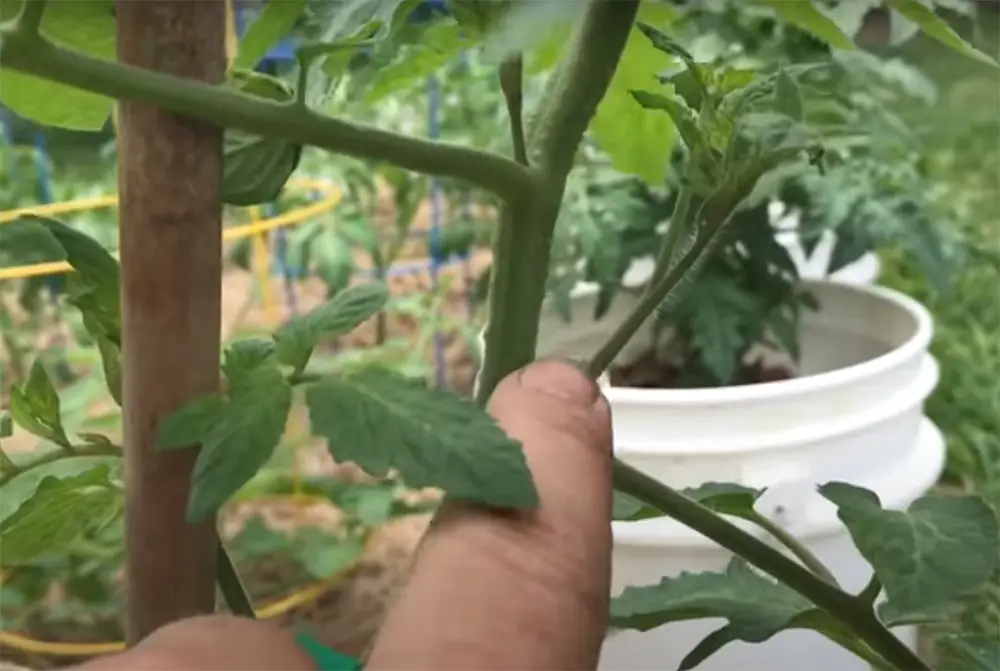
When deciding which type of tomato plant to grow in the garden, it’s important to consider how much space and effort you are willing to dedicate to caring for the plants. Determinate varieties tend to have more compact growth habits and require less pruning or staking than indeterminate varieties. On the other hand, indeterminate varieties can produce larger yields over a longer period.
When selecting a variety, it’s important to consider your climate and the length of your growing season. Determinate tomatoes are better suited for shorter growing seasons while indeterminate tomatoes need more time on the vine to ripen properly. It’s also important to select varieties that are well-suited for your region as some may be more prone to disease or pests than others.
No matter which type of tomato you choose, it’s important to provide the plants with plenty of sunshine, water, and nutrients throughout the growing season. Regular pruning and staking is also recommended to help the plants maintain their structure and ensure good air circulation. With a little bit of care, you can enjoy a bountiful harvest of juicy tomatoes all season long [1]!
How Many Kilograms Does A Tomato Plant Produce?
Tomato plants can be a great addition to the vegetable garden, as they are easy to grow and provide an abundant crop of delicious tomatoes. But how many kilograms does a tomato plant produce? The answer depends on several factors, such as the variety of tomatoes, soil conditions, and environment.
The size and yield of a tomato plant also depend on how it is cared for. A plant that has been properly watered and fertilized can produce more tomatoes than one that has been neglected. Additionally, tomato plants prefer full sun to grow better and larger, so it is important to ensure they get enough sunlight during the day.
Finally, it is also worth noting that tomatoes ripen at different times. If you harvest them when they are still green, each plant might yield fewer tomatoes. Therefore, if you want to maximize the yield of your tomato plants, it is best to wait until they have fully ripened before harvesting them.
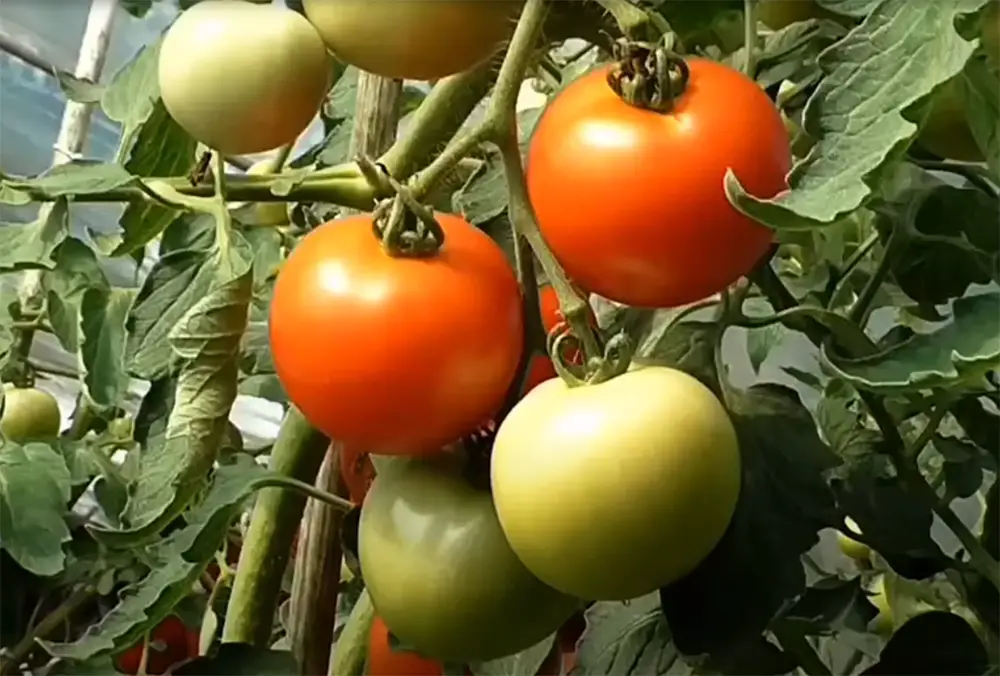
No matter how many kilograms a tomato plant produces, one thing is certain: tomatoes are a nutritious and delicious addition to any garden or kitchen! They are packed with vitamins and minerals such as vitamin C, vitamin A, folic acid, and potassium. Eating fresh tomatoes is a great way to get the nutrition you need without having to rely on processed foods. Plus, they are incredibly versatile and can be cooked in many different ways. Whether it be roasted, stewed, or in a salad, tomatoes make a tasty addition to any meal [2]!
Best High-Yielding Tomato Varieties
Roma Tomatoes
Roma tomatoes, also known as Italian plum tomatoes, are not only popular but also widely recognized for their exceptional culinary versatility. With their vibrant red color and thick, meaty flesh, Roma tomatoes are the perfect choice for creating rich and flavorful sauces, hearty stews, and a variety of other delicious dishes. Their excellent flavor profile, coupled with their high yield, makes them a favorite among chefs and home cooks alike. Additionally, the relatively small size of Roma tomatoes not only enhances their visual appeal but also minimizes waste in comparison to larger tomato varieties. So whether you’re looking to elevate your pasta sauce or add a burst of freshness to your salads, Roma tomatoes are an excellent choice that will surely delight your taste buds.
Brandywine Tomatoes
The Brandywine tomato is a heritage variety that has been around since the late 1800s. Although it’s considered to be an heirloom variety, it still produces abundantly and yields high-quality, flavorful tomatoes. Its large size makes it ideal for slicing into salads or sandwiches and its deep red color adds visual appeal to any dish. Additionally, its robust flavor profile makes it an excellent choice for canning or roasting, while its dense and juicy flesh ensures that it won’t break down too easily during cooking. And with its high-yielding characteristics, you can be sure to have enough of this delicious variety to keep your kitchen stocked all season long.
San Marzano Tomatoes
San Marzano tomatoes are a variety of plum tomatoes that have been grown in the volcanic soil of Mount Vesuvius for over 200 years. This Italian heirloom variety is widely known for its sweet, yet slightly acidic flavor profile and its thick flesh which yields fewer seeds than other varieties. San Marzano tomatoes are often used to make sauces, soups, and stews due to their strong flavor profile and intense red color. Additionally, these tomatoes are also highly productive with an average yield of about two to three pounds per plant. San Marzano tomatoes are a great choice for any home cook looking to create delicious Italian-style dishes that won’t disappoint.
Beefsteak Tomato
Beefsteak tomatoes are a large variety that is usually used for slicing and adding to sandwiches or salads. This type of tomato has an intensely sweet flavor and its dense texture ensures that it won’t become too mushy when cooked. Additionally, Beefsteak tomatoes are known to produce abundantly with some plants yielding up to twenty pounds of tomatoes per growing season. So if you’re looking for a large and flavorful tomato variety that will yield plenty of tomatoes throughout the season, Beefsteak tomatoes are an excellent choice.
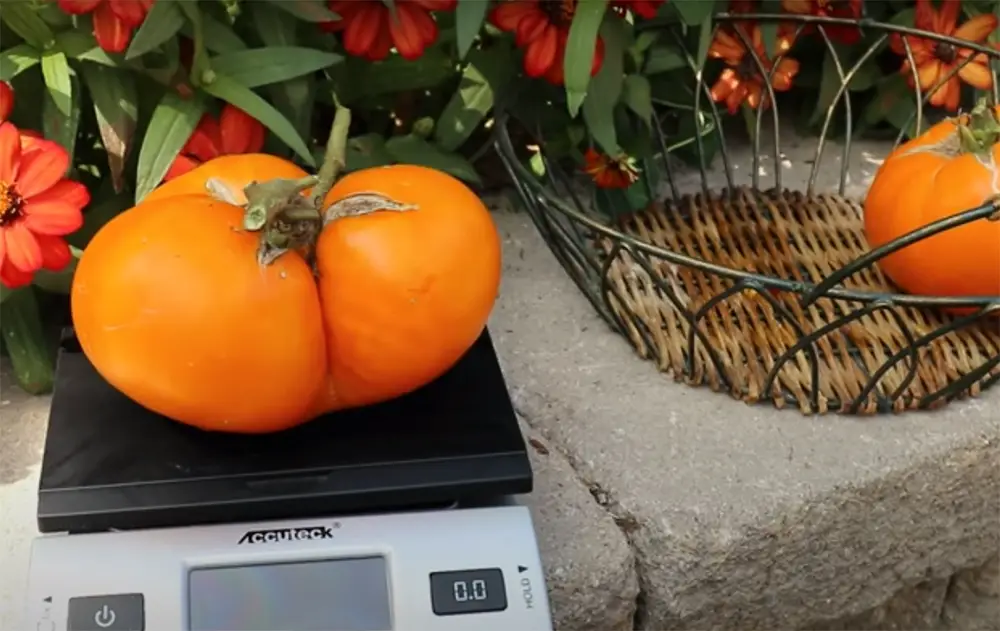
Grape Tomato
Grape tomatoes are a small, yet tasty variety of tomato that has become increasingly popular in recent years. This petite variety is ideal for snacking or salad toppings due to its sweet flavor and firm flesh. Grape tomatoes also have a relatively long shelf life which makes them an excellent choice for preserving by canning, drying, or freezing. Additionally, these tomatoes are also known to be highly productive and some plants can yield up to ten pounds per growing season. So whether you’re looking for a flavorful snack or an ingredient that will add a burst of flavor to your dishes, grape tomatoes are sure to be a hit.
Cherry Tomatoes
Cherry tomatoes are one of the most popular varieties grown in home gardens due to their sweet flavor and small size. These little gems come in a wide variety of colors including bright yellow, deep orange, and vivid red. Cherry tomatoes are perfect for snacking right off the vine or adding to salads for a colorful presentation. Additionally, with their high yield potential, you can be sure that you’ll have plenty of these tasty treats to enjoy all season long. So if you’re looking for a sweet and juicy variety that will produce abundantly, cherry tomatoes are an excellent choice [3].
How To Increase The Yield Of Your Tomato Crop?
Start With The Best Plants
The first step towards ensuring a bountiful yield for your tomato crop is to start with the best plants. Take the time to carefully select strong, healthy seedlings from reputable nurseries or trusted online suppliers. Consider purchasing varieties that are specifically suited to thrive in your local climate and soil type. By doing so, you are setting your tomato plants up for success right from the start.
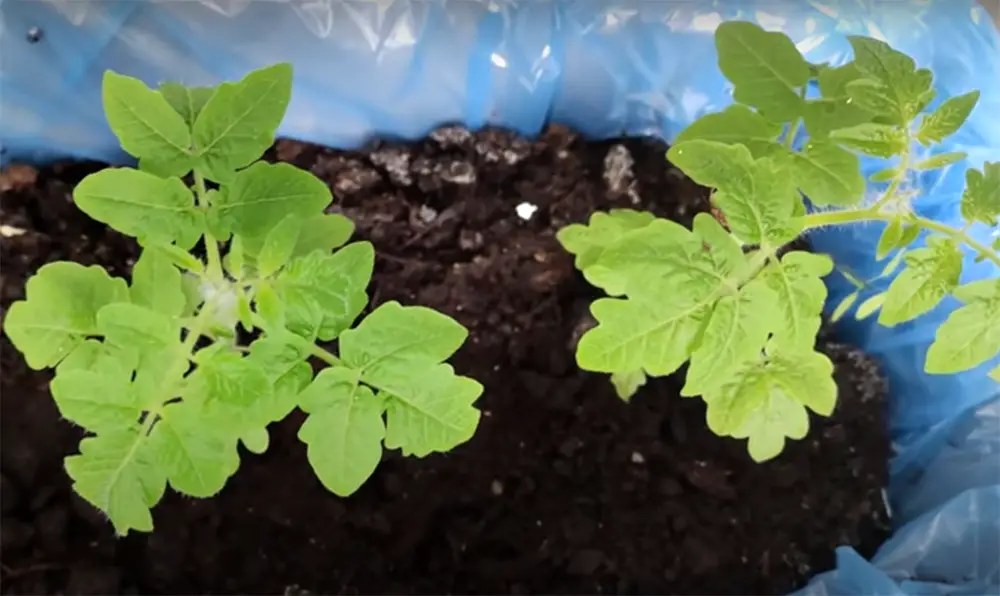
Optimal Growing Conditions
To ensure the best possible yield from your tomato crop, it is crucial to create optimal growing conditions. This entails providing the plants with sufficient sunlight and warmth, as well as ensuring proper spacing for optimal air circulation. Additionally, incorporating mulch in the soil around the plants not only helps suppress weed growth but also aids in maintaining consistent moisture levels, which is vital for healthy tomato plants.
Furthermore, it is important to consider the nutrient requirements of tomatoes. Providing them with a balanced fertilizer, rich in essential nutrients such as nitrogen, phosphorus, and potassium, can promote vigorous growth and enhance fruit production. Regularly monitoring soil pH levels and making necessary adjustments can also contribute to optimal nutrient uptake by the plants.
Another factor to consider is pest and disease management. Implementing preventive measures such as using organic pest control methods, practicing crop rotation, and regularly inspecting plants for signs of diseases or pests can help mitigate potential issues and protect the health of your tomato plants.
Provide The Correct Amount Of Nutrients
Tomatoes, being nutrient-demanding plants, require a carefully balanced combination of essential elements to foster their growth and overall health. Before planting, it is highly recommended to enrich the soil with high-quality compost or well-rotted manure. This step serves the purpose of not only enhancing the organic matter content but also ensuring an adequate supply of vital nutrients such as nitrogen, phosphorus, and potassium, which are crucial for robust tomato development.
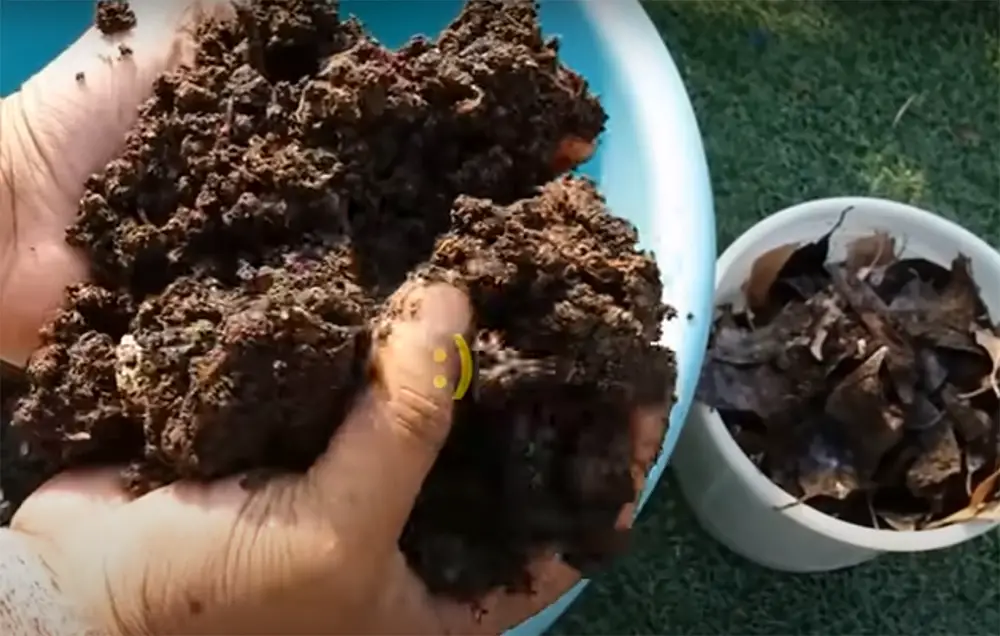
Additionally, to further support the plants’ nutritional needs throughout the growing season, the application of an all-purpose fertilizer can be beneficial. This practice will provide the necessary supplementary nutrients, allowing the tomatoes to thrive and yield bountiful harvests.
Analyze Your Soil Health
To ensure the optimal growth and yield of your tomato crop, it is crucial to thoroughly assess the soil health every season. By conducting a comprehensive soil test, either with a soil test kit or by sending samples to an independent laboratory, you can gain valuable insights into the nutrient composition and overall condition of the soil.
This detailed analysis will enable you to identify any potential nutrient deficiencies, pH imbalances, or other soil-related issues that may affect the growth and development of your tomatoes. Taking proactive measures to address these concerns before planting will help create an ideal environment for your tomato plants, maximizing their productivity and overall health.
Feed Regularly
To maintain the optimum health and productivity of your tomato plants, it is crucial to provide them with regular nourishment. Selecting an organic fertilizer specifically formulated for tomatoes and carefully following the application instructions on the package is key. This meticulous approach guarantees that your plants receive a well-balanced supply of essential nutrients throughout the entire growing season, promoting robust growth and bountiful harvests. In addition to feeding, it is equally important to deep-water your tomato plants twice a week.
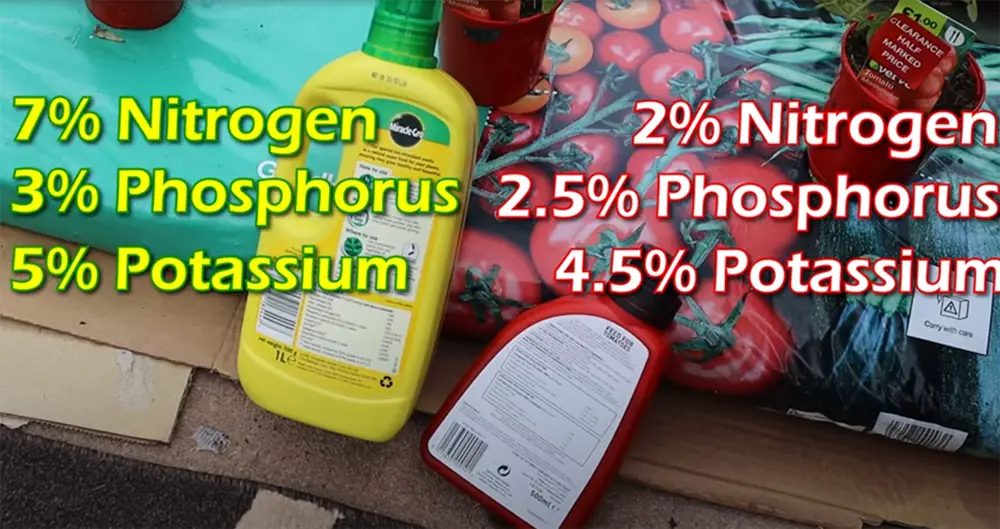
This practice encourages the development of strong and extensive root systems, which not only enhance nutrient absorption but also fortify the plants against potential diseases. By implementing these comprehensive strategies, you can ensure the vitality and success of your tomato garden.
Control Pests And Diseases
In addition to regular care, it is crucial to be vigilant about potential pests and diseases that can harm your precious tomato crop. By taking proactive measures to remove or control any pests or diseases before they escalate, you can safeguard the health of your plants. Consider treating the plants with organic insecticides or fungicides, carefully removing affected leaves to prevent further spread, and implementing proper spacing and air circulation techniques to minimize the risk of disease outbreaks. These meticulous steps will ensure the longevity and productivity of your tomato plants.
Harvest Regularly
By harvesting the tomatoes promptly, you can ensure that the nutrients are preserved at their peak, resulting in the most flavorful and nutritious harvest. Additionally, removing ripe tomatoes from the vines allows the plant to redirect its energy towards the growth of new fruits.
To make the most of your tomato harvest, it is recommended to check your tomato plants daily during the harvest season. This way, you can identify ripe tomatoes and harvest them at the perfect time, maximizing the yield and enjoying the delicious results of all your hard work [4]!
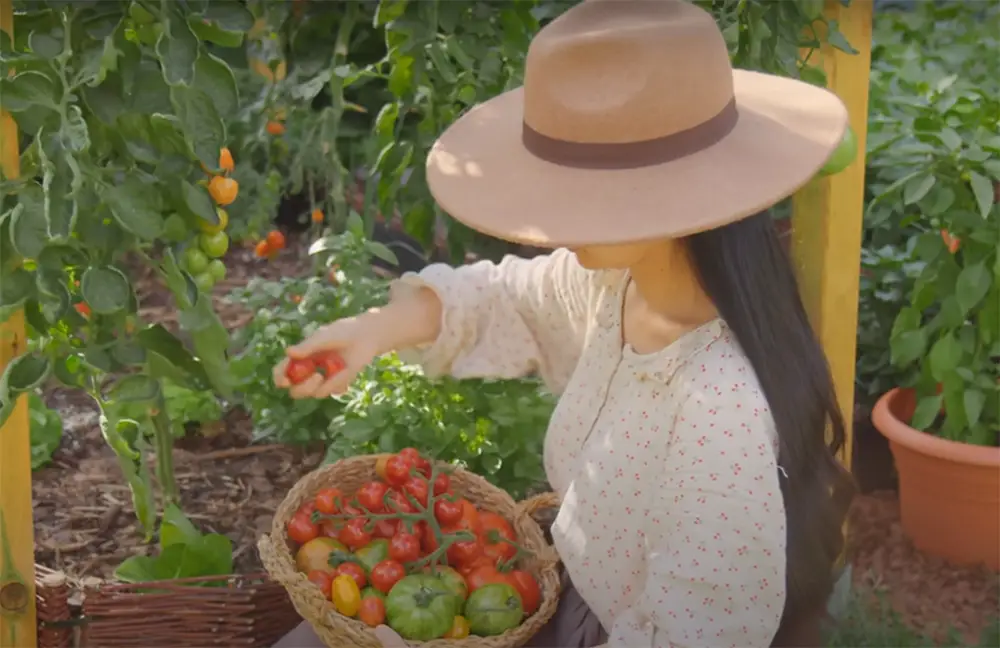
FAQ
What is the average yield of a tomato plant?
The average yield of a tomato plant is approximately 10-30 lbs. per plant, depending on the variety and environmental conditions. The amount of tomatoes produced can also vary with different growing techniques and soil types. For example, using mulch or applying fertilizer may help increase the yield of a tomato plant. Additionally, consistent watering and pruning can help promote growth and overall yield. Planting determinate varieties will also help maintain a more consistent harvest throughout the season. It is important to note that yields can be affected by diseases, pests, and other unforeseen circumstances such as weather conditions. Therefore, it is recommended to have several tomato plants to ensure a good harvest in case of any crop failure or disease outbreak.
How many Roma tomatoes will one plant produce?
The number of Roma tomatoes that one plant will produce can vary greatly depending on the variety and environmental conditions. Generally, a single plant can yield anywhere from 6-20 lbs. of Roma tomatoes when grown in favorable conditions. Certain varieties such as ‘Mountain Magic’ are known to produce larger yields than other varieties. However, it is important to remember that yields may be affected by various factors such as watering, fertilizing, pruning, and disease. It is recommended to have several plants to ensure a good harvest in case of any crop failure or disease outbreak.
What are some tips for growing tomatoes?
Tomatoes can be one of the most rewarding vegetables to grow in your garden. To ensure a successful tomato crop, there are several tips to keep in mind. For starters, make sure to choose the right variety for your climate and soil conditions. Additionally, tomatoes like slightly acidic soil with a pH of 6-6.8, so it is important to test the soil before planting. Give tomato plants plenty of water – about one inch per week – but avoid over-watering as this can lead to disease. Mulching the soil around the plants will help maintain even moisture and combat weeds. Finally, pruning off any excess foliage or side shoots will help increase air circulation and reduce potential diseases. Following these tips can go a long way in ensuring a successful tomato crop!
What is the best time of year for growing tomatoes?
The best time of year to plant tomatoes depends on the climate in which you live. In general, tomato plants should be planted when the soil temperature is consistently above 60-65 degrees Fahrenheit and all danger of frost has passed. For those in more temperate climates, early spring is typically an optimal time for planting tomatoes. In warmer climates, it may be possible to start planting in late winter or very early spring. If you live in a colder climate, you may need to wait until late spring or even early summer before starting your tomato plants. Make sure to check the temperature of the soil and watch for any signs of frost before planting tomatoes!
What are determinate and indeterminate tomatoes?
Determinate tomatoes, also known as bush tomatoes, are varieties that grow to a predetermined size and produce all their fruit at once. These types of tomato plants typically do not require pruning or staking because they stay relatively short. Indeterminate tomatoes, also known as vining tomatoes, can continue to grow and produce fruit throughout the season. These types of plants need to be staked or caged to support their weight and help keep the fruit off the ground. Indeterminate tomato plants can also benefit from occasional pruning to remove any excess foliage and improve air circulation. Choosing the correct variety for your climate and needs will help ensure a successful harvest!
What diseases can affect tomatoes?
Tomatoes are susceptible to various diseases, both fungal and bacterial. Common diseases that can affect tomatoes include early blight, late blight, verticillium wilt, and septoria leaf spot. These can all be caused by environmental factors such as too much or not enough water, poor air circulation, and high humidity levels. To prevent disease from occurring in your tomato plants it is important to practice good gardening techniques such as mulching, pruning, and watering consistently. Additionally, applying a fungicide to the plants can help reduce the risk of disease outbreaks. It is important to note that some of these diseases are difficult or impossible to cure once they have occurred so prevention is key!
What insects can damage tomato plants?
Tomato plants are vulnerable to various pests, including aphids, flea beetles, leafhoppers, tomato hornworms, and cutworms. These pests can weaken the plants and reduce the overall yield of tomatoes. To prevent infestations it is important to practice good gardening techniques such as mulching and rotating crops. Additionally, regular monitoring of your plants will help you catch any pest issues early on before they become too serious. If you do find insects on your plants, there are various ways to get rid of them such as using insecticidal soap or hand-picking and drowning the pests in soapy water. Taking these steps can help keep your tomato plants healthy and productive!
What is the best way to store tomatoes?
The best way to store tomatoes will depend on how ripe they are when picked. Unripe tomatoes can be left to ripen at room temperature and should be consumed within a few days once fully ripe. Ripe tomatoes can also be refrigerated, but this will cause them to lose some of their flavor and texture. If you want to store tomatoes for longer periods, it is best to freeze or can them. Tomatoes can be frozen whole, sliced, or in the form of puree or sauce. Canning is also a great way to store tomatoes and can extend their shelf life for up to one year. Either method will help preserve the flavor and nutrient content of your tomatoes!
Do tomato plants produce annually?
Most tomato plants are considered annuals, meaning they will live for one growing season before dying. However, some varieties are perennial and may come back year after year if given the right conditions. These varieties tend to produce lower yields than annual varieties but can save time and money in the long run by eliminating the need to replant every year. Additionally, some tomato plants can be produced for several years if the pH levels, temperatures, and moisture of the soil are maintained. This can be an ideal option for those looking for a long-term harvest!
What are some ways to use tomatoes?
Tomatoes are incredibly versatile and can be used in a variety of dishes. Sliced tomatoes are great for sandwiches, salads, and appetizers. They can also be roasted or grilled to bring out a delicious sweetness. Tomatoes are often used as the base for sauces and soups, such as marinara sauce or tomato bisque. In addition, they can add flavor to tacos, burgers, pizza, and other dishes. Tomatoes can also be enjoyed fresh as a snack or in smoothies and juices. With their delicious flavor and versatility, tomatoes are an essential ingredient for any kitchen!
Useful Video: How Many Tomatoes Can You Get From One Tomato Plant?
Conclusion Paragraph
Tomatoes are great vegetables and can be grown in the garden. One tomato plant can produce a surprisingly large number of tomatoes. Tomatoes can be eaten fresh or cooked into a variety of dishes. They are also versatile, and they come in a variety of shapes, sizes, and colors. Growing tomatoes in the garden is easy and can provide excellent results with minimal effort. With proper care, tomato plants can produce delicious fruits for many years to come. Additionally, growing tomatoes helps to reduce food waste and provide a healthy, nutrient-rich snack. With such advantages, it is clear why so many people choose to grow their own tomatoes in the garden.
References:
- https://gardenerspath.com/plants/vegetables/in-determinate-tomatoes/
- https://www.greenhousetoday.com/how-many-tomatoes-can-1-plant-produce/
- https://www.yourindoorherbs.com/highest-yield-tomato-varietes/
- https://gardening.org/12-tomato-growth-hacks-for-a-high-yield-harvest/










Leave a Reply
View Comments